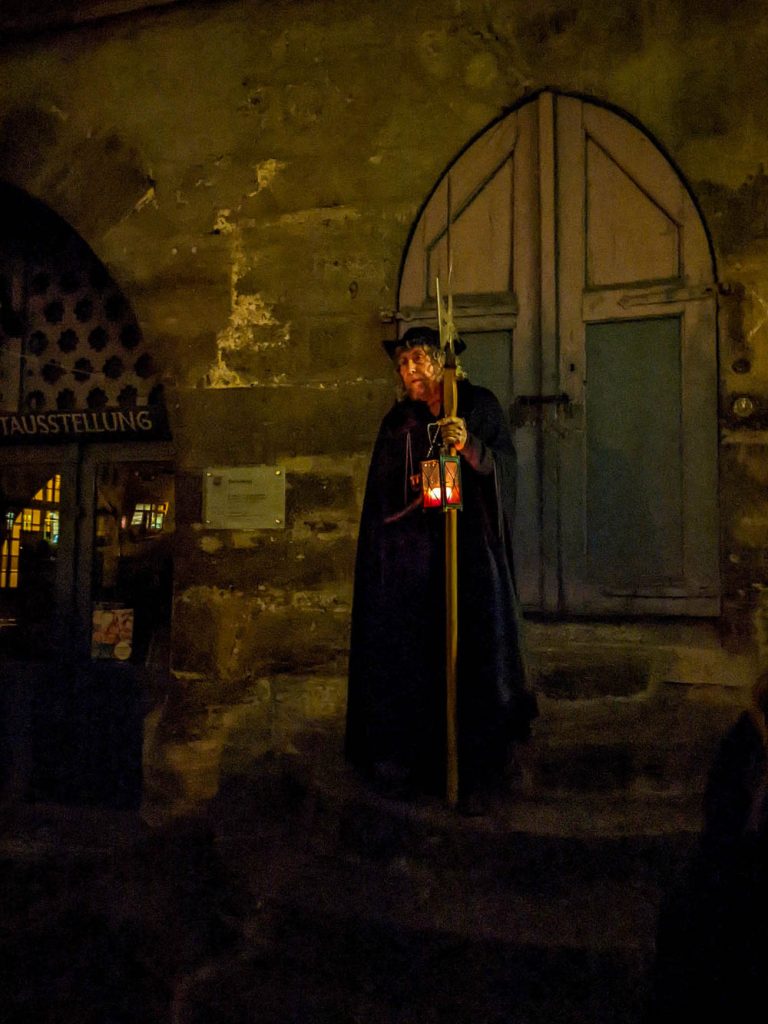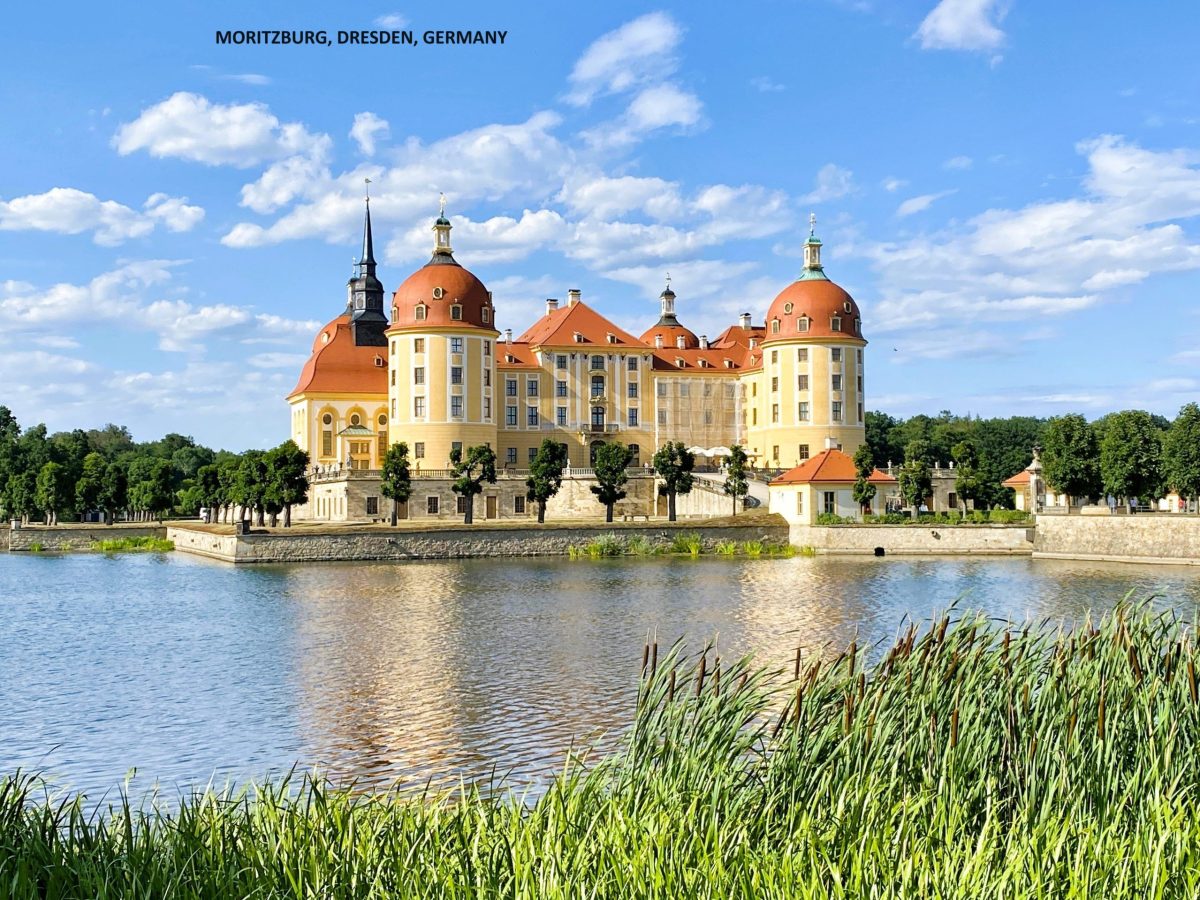After a superb day at Forchheim we returned to our campsite near Bamberg to plan the next day or two and enjoy a couple of drinks. I’d previously researched Franconia and it didn’t take me long to persuade Vanya that the little town of Rothenburg ob der Tauber in Middle Franconia should be our next destination.
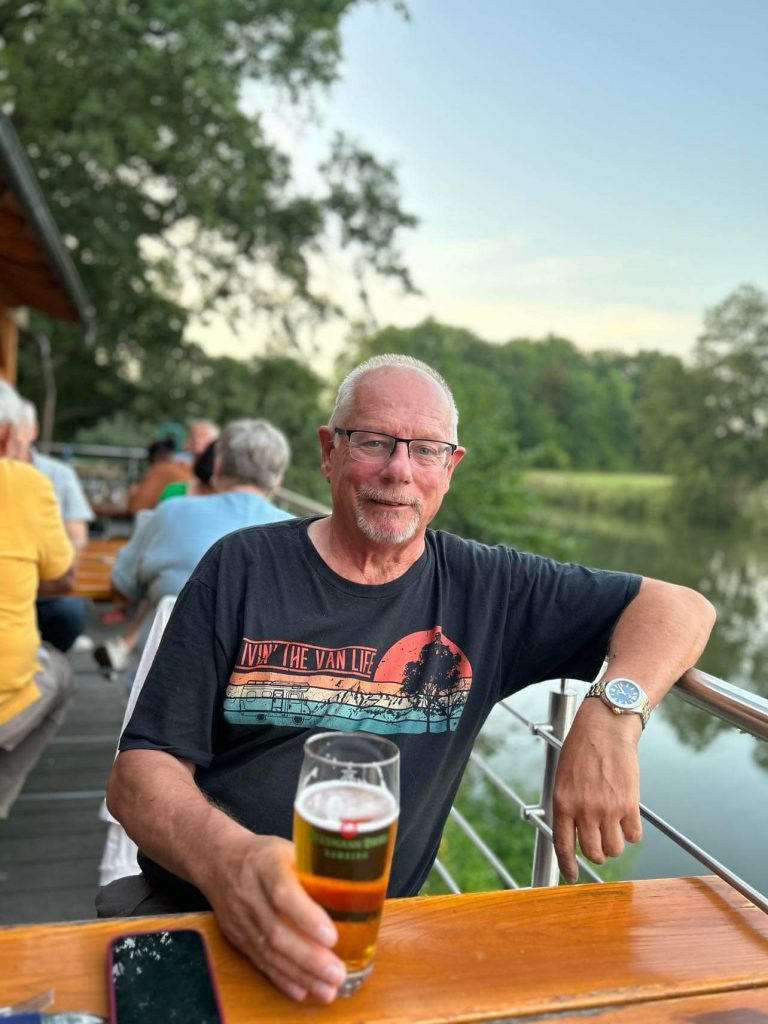
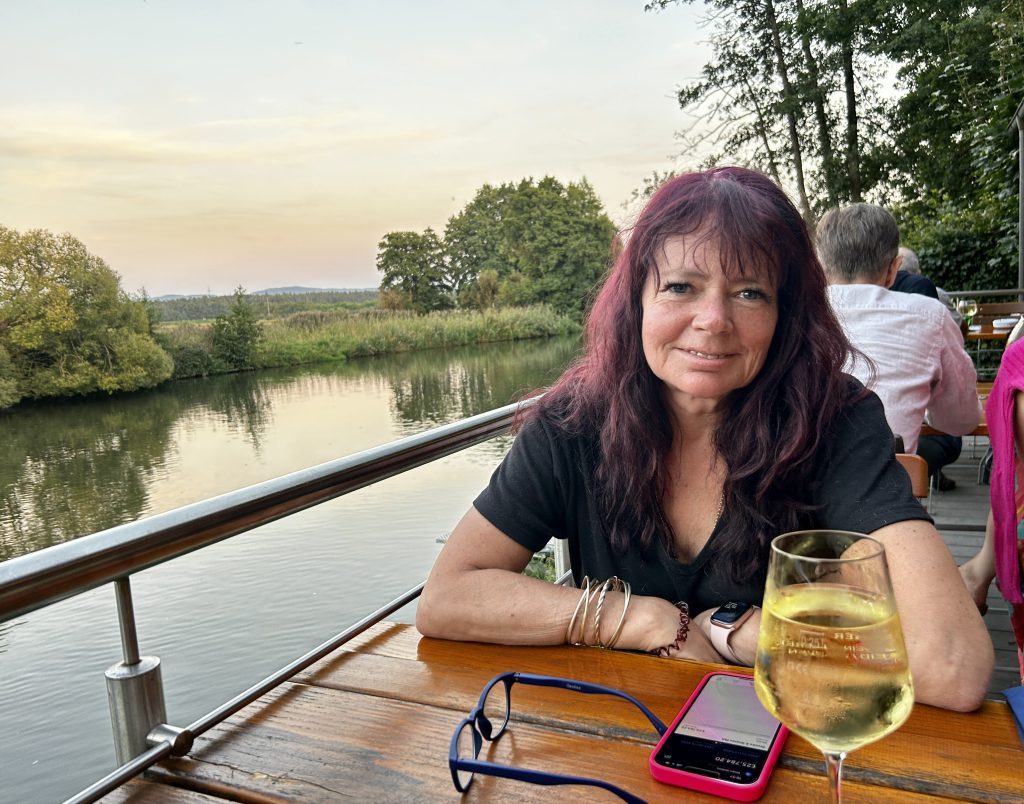
Sitting on the terrace of the campsite bar, planning our next move.
I booked us into a camp site near Rothenburg – the Tauberromantik; so called because it sits on the ‘Romantic Road’ (a scenic route conceived and marketed by canny travel agents as a ploy to increase tourism in the area between Rothenburg and Fussen) and we set off early the next morning.
Rothenburg ob der Tauber is an extraordinarily pretty place. In terms of population it is only a third of the size of Forchheim but it easily matches the larger town for things to see and do. Anyone visiting the town needs to spend a minimum two days here (and at least one night) just to scratch the surface of the place and we decided to do just that.
Rothenburg resembles a Walt Disney fairytale town and it is easy to see why it was revered as ‘the most German of German towns’ in the 1930’s. Indeed, the Nazis used to bus children into the town from all over Germany so that they could experience this picture perfect town. We made our way towards the town centre through the Klingentor (gate) and stopped at the Guckloch bar for a spot of refreshment (it was a hot day) and to plan our route around the town.
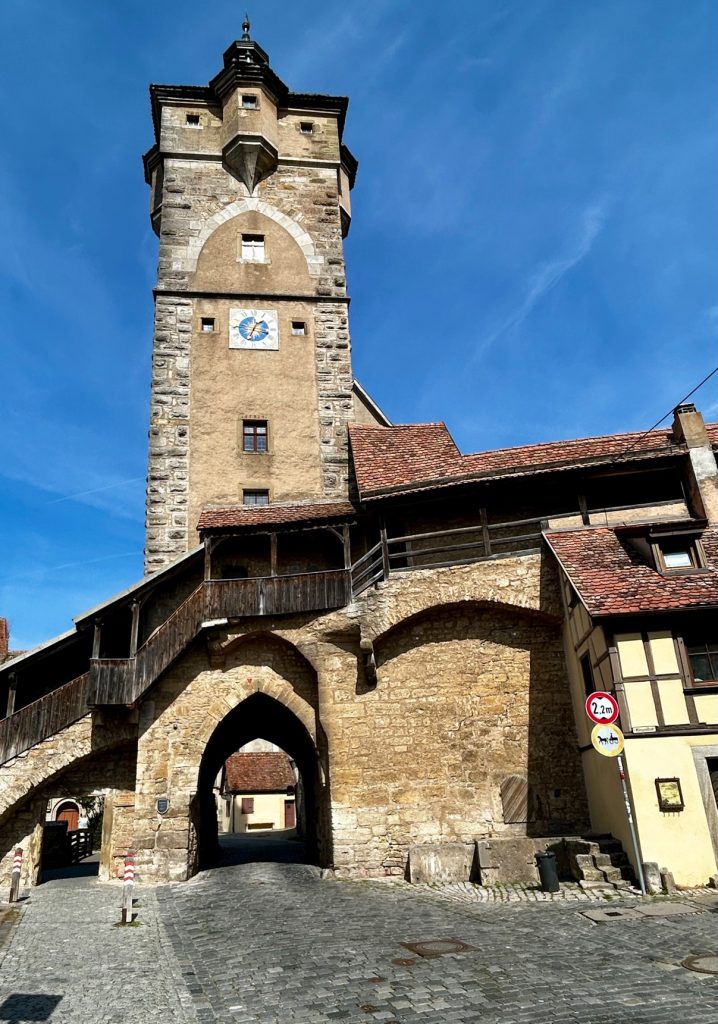
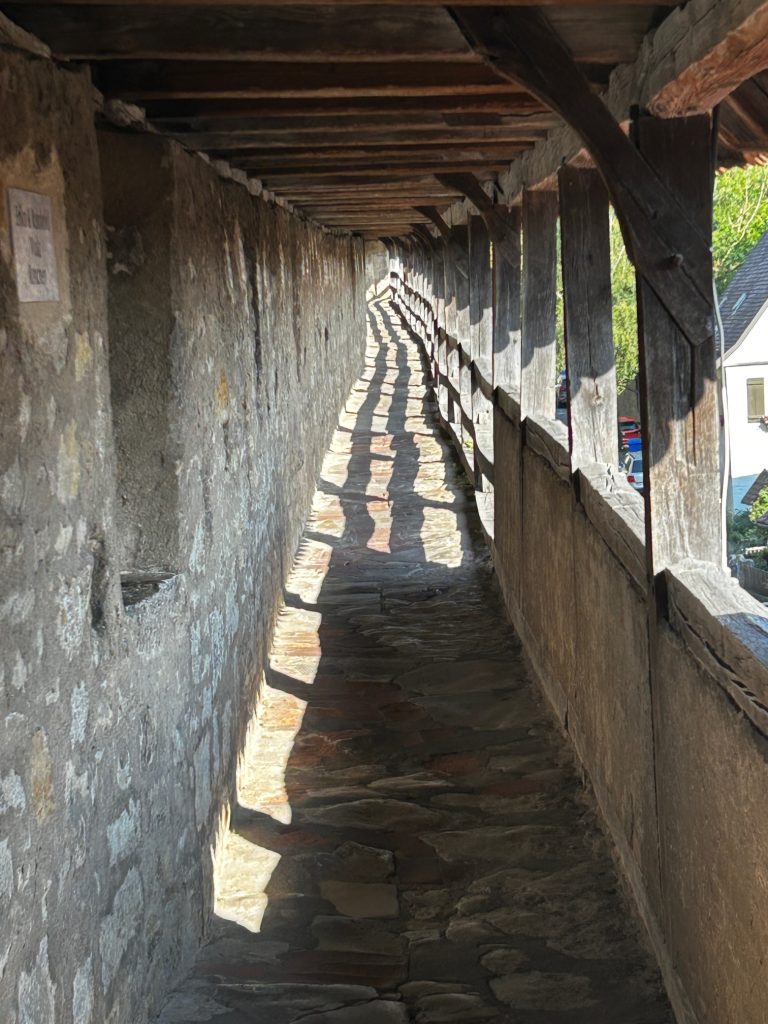
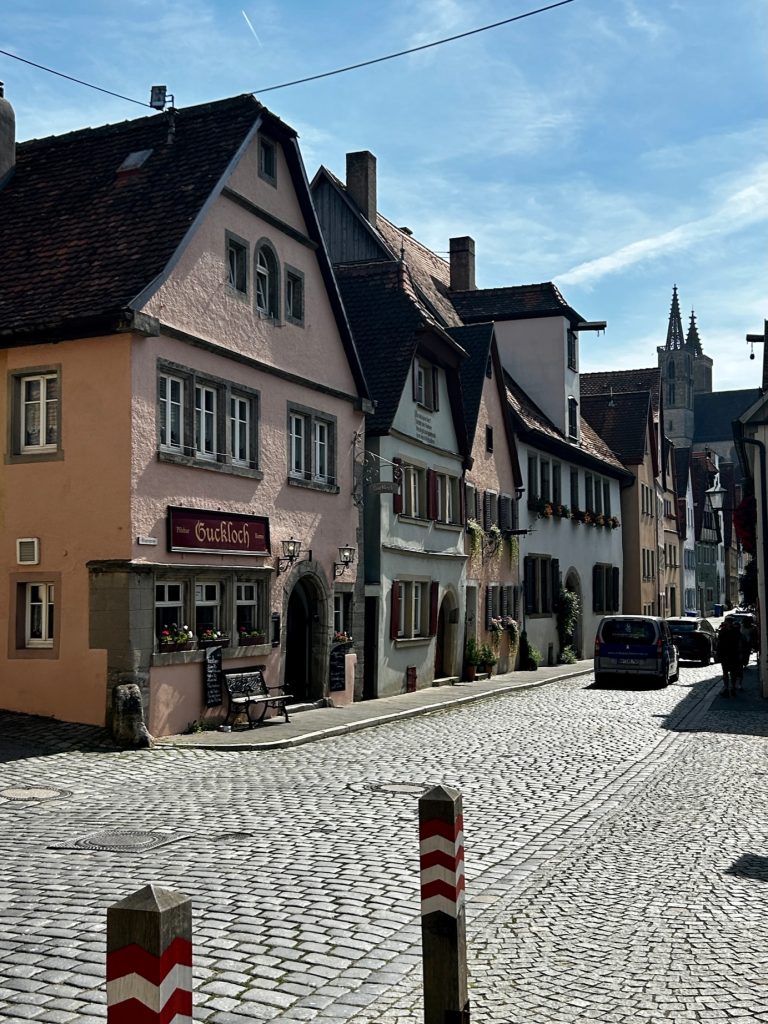

Sitting in the sunshine outside the Guchloch Bar near the Klingentor. There are 4 kilometres of sentry walls to walk from the Klingentor.
Sadly, our plan didn’t materialise. Vanya was in real pain with her hip and after escorting her and the dogs back to the Van I was left to explore the place on my own in the hope that, after resting her hip some more, she would be able to join me for a shorter more focused tour of the town during the evening. Fingers crossed.
Making my way back into the town I again passed through the Klingentor, this time pausing to view the Wolfgangskirche. The Wolfgangskirche is a fortress church near the Klingentor and it originally formed part of the medieval town’s defences. Indeed, the tower gate adjacent to the church (that’s the Torwachterhaus or Sentries’ House) and it’s casements (gun emplacements) are each accessed from inside the church through a door by the altar. It wasn’t until I saw the Wolfgangskirche that I really began to understand what a fortress church is.
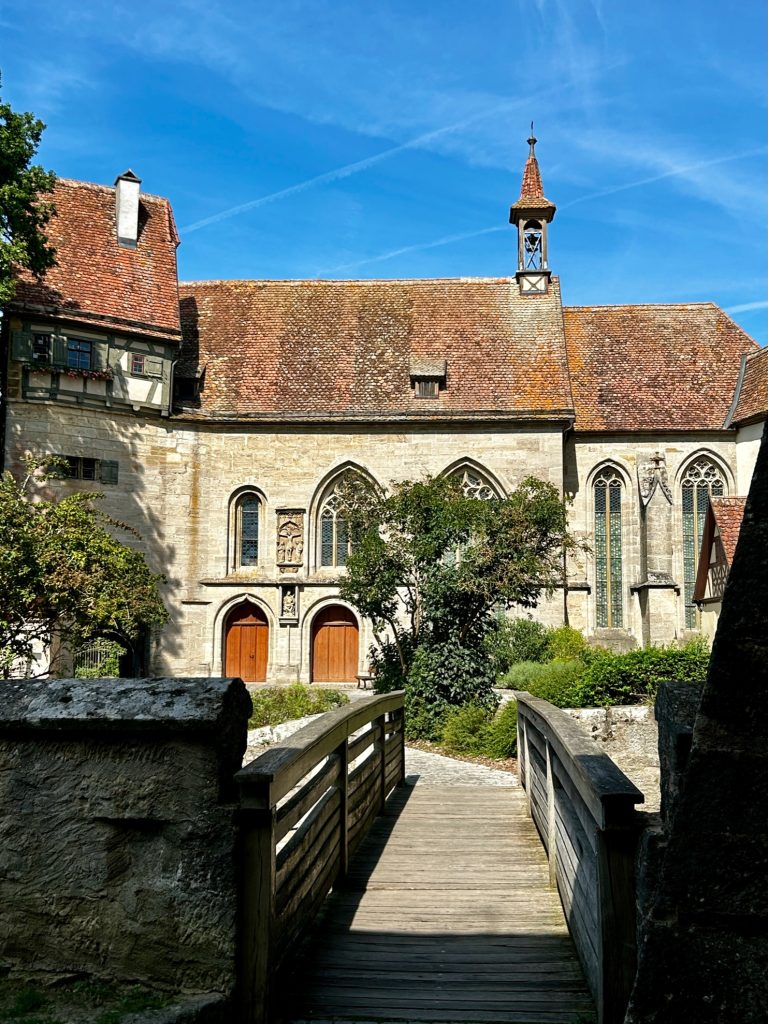

I set my mind to walk a section of the castle walls later in the day but to start with I made for the “Plonlein”. A plonlein is a small square with a fountain and there are few of those across Rothenburg but the plonlein I was going to is arguably the town’s most popular landmark and certainly one of the most picturesque. It’s not far from the town’s main square and it features a tall crooked mustard coloured half timbered house which sits on a cobbled square (with the necessary fountain) between two 13th century city gates, the Siebersturm and the Kobolzellarturm. There is little that is historically significant about this particular setting but images of the place are to be found on countless travel blogs (especially those promoting the Romantic Road) and it was the inspiration behind Geppetto’s home in Walt Disney’s 1940 animated film ‘Pinocchio’. It really is the most picturesque spot in a particularly enchanting little town.
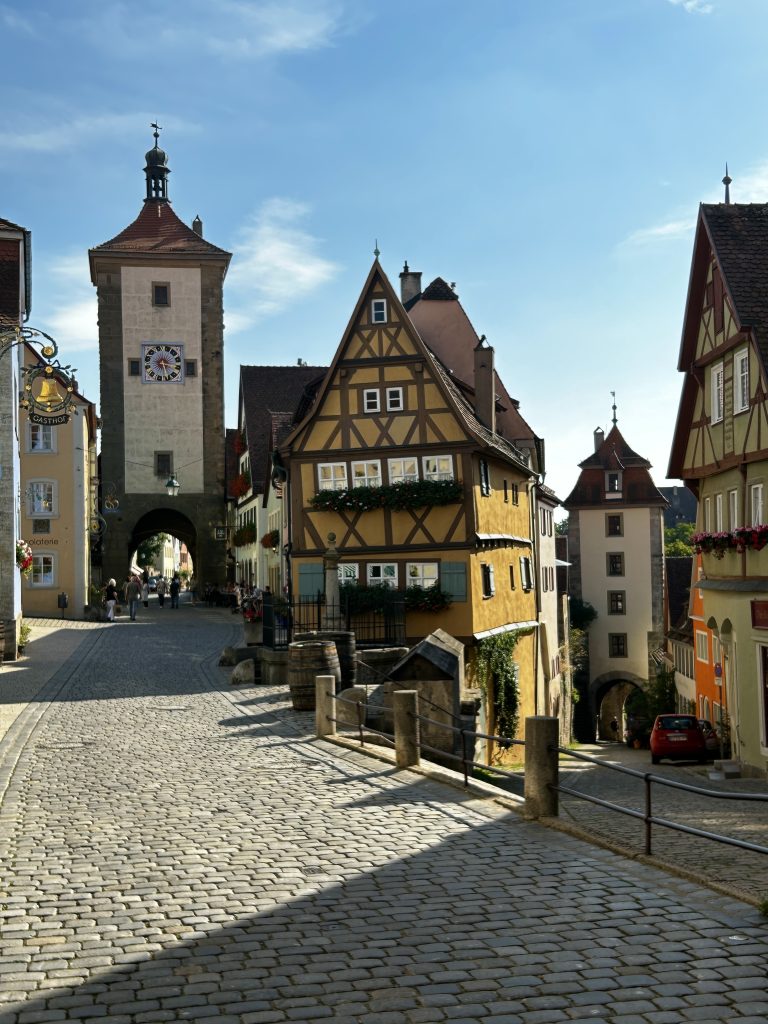
After visiting the Plonlein I made for Rothenburg’s lively Marktplatz where the Rathaus (Town Hall), with it’s unusual mix of 13th century Gothic and 16th century Renaissance styles, is located. The Rathaus, together with it’s white tower, is the most imposing building on the Marktplatz but there are other interesting features to be found on the square, most particularly the Georgsbrunnen Fountain (with it’s wonderfully detailed statue of St. George killing a dragon) and numerous half timbered buildings, my favourite being the Ratstrinkstube Clock Tower.
The Rathaus was not open while I was on the Marktplatz or I would have made a point of going up it’s 50 metre high Tower which is towards the back of the building. There’s a nominal charge (with the entrance being through the arches at the front of the town hall and not where you might expect it to be at the foot of the tower) but it supposedly offers some of the best views in Rothenburg.
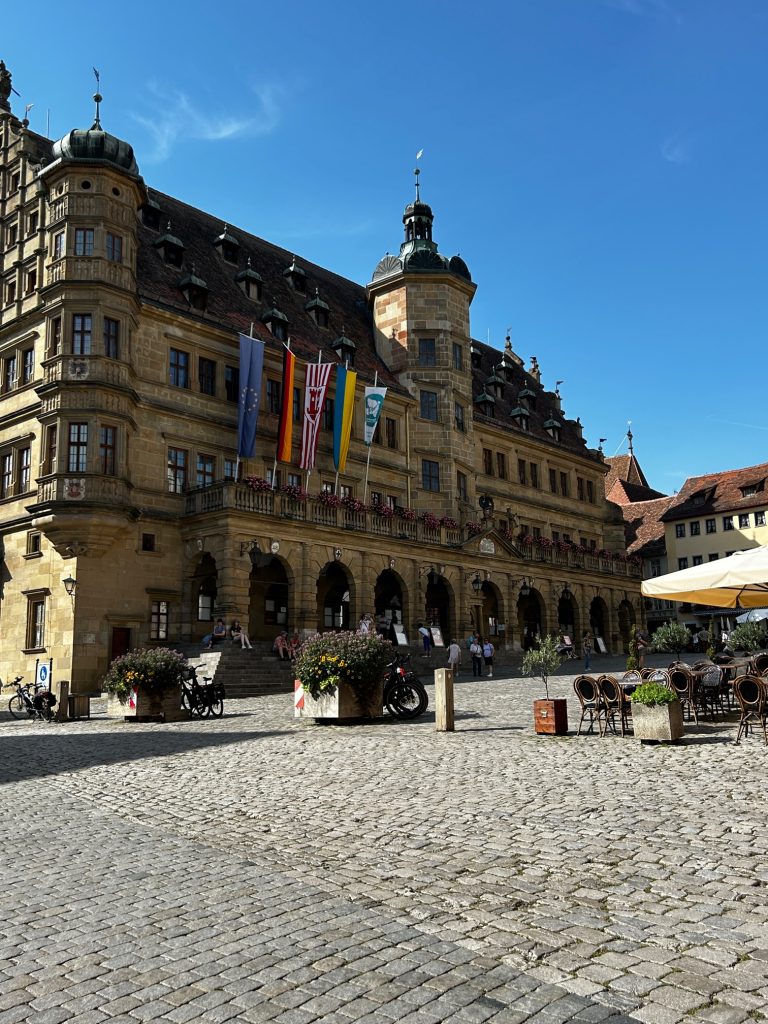

Which brings me to my favourite building on the Marktplatz, the Ratstrinkstube (sometimes known as the Council Tavern because for a period of time it was only the city fathers who could drink in the bar – the general public were denied entry). Legend has it that in 1631, during the Thirty Years War, the Protestant town of Rothenburg was seized and about to be destroyed by the Catholic forces of a certain Count Tilly until the then mayor (Burgermeister Georg Nusch) persuaded the Count to accept a wager which would see the town spared if the mayor could drink an entire (3.25 litre) jug of wine in one go. That’s almost a gallon of wine. Mayor Nusch finished the wine in one visit and the Count honoured the wager and spared the town. Nowadays, when the clock chimes on the hour (between 10am and 10pm), two doors either side of the clock on the Ratstrinkstube open and the event is to some extent re-enacted by puppets, one of which is Mayor Nusch drinking from a large tankard while the clock chimes.
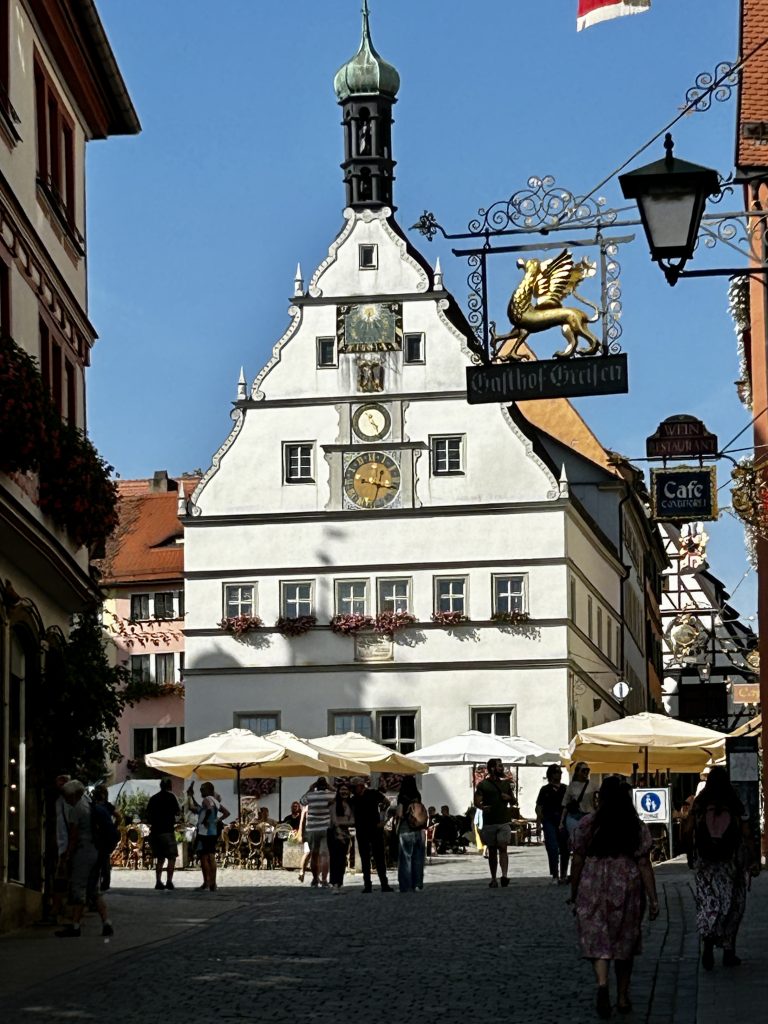

It is a real joy strolling Rothenburg’s pretty little backstreets, not least because it takes you away from the numerous tour groups that frequent the town during the day. One particularly charming building I stumbled across while walking the backstreets is “Die Gerlachschmiede”, an old forge built in 1469 which was destroyed during a bombing raid in WW2 but faithfully restored to the original specification (and which continued to be worked by a blacksmith until well into the 1960’s).
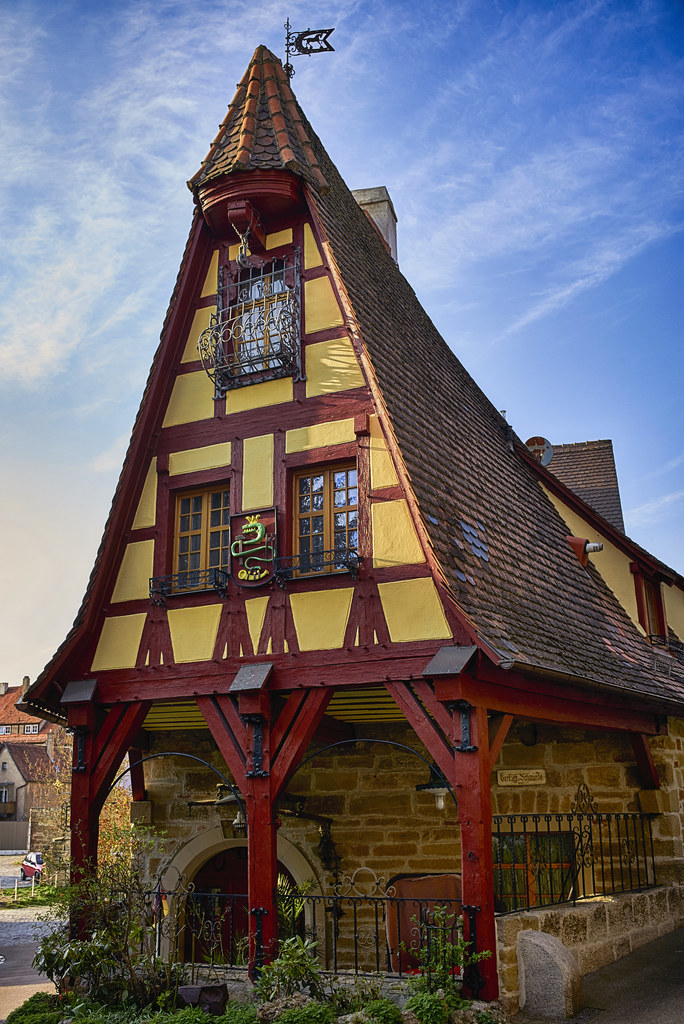
I could go on for ages writing about the many wonderful places in Rothenburg but it is time to let some photos do the talking; starting with the town’s High Gothic Church of St Jakob’s (Saint James in English). This triple nave church was consecrated in 1485, having taken more than 150 years to build, and it contains some beautifully ornate fixtures and fittings which lend themselves more to a Roman Catholic church than an Evangelical Lutheran church. Of course, St Jakob’s once was a Catholic church.


Outside Saint Jakob’s Church. Saint Jakob’s is a major stop on the Jakobsweg to Santiago de Compostela.

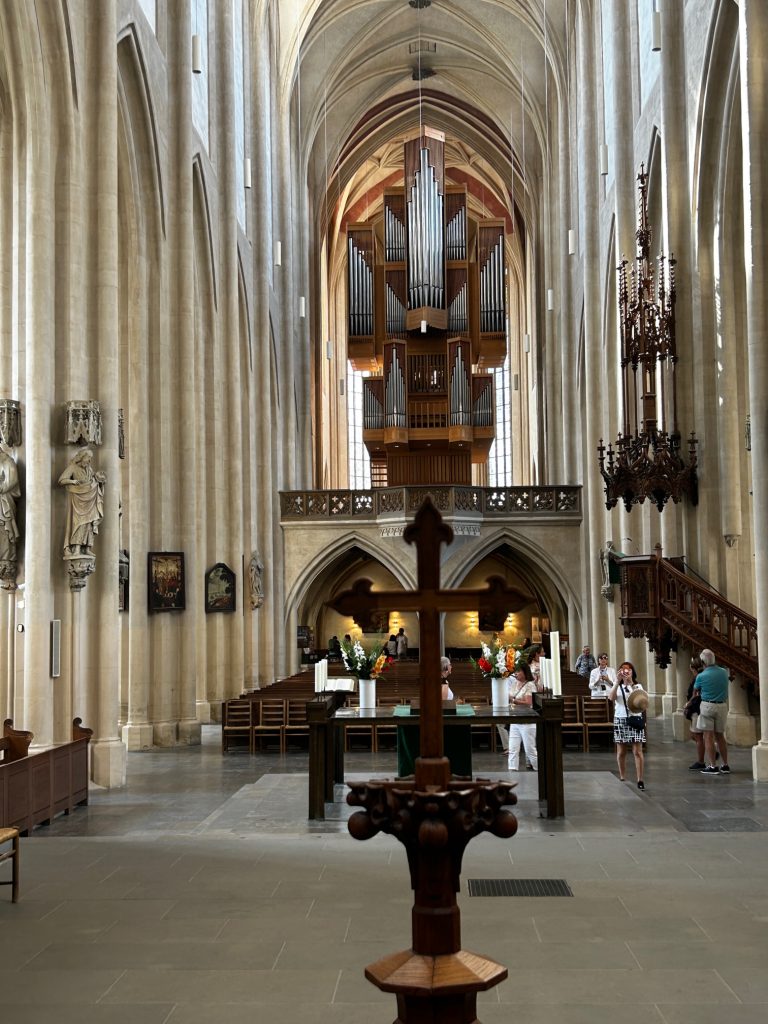
Inside Saint Jakob’s looking towards the central nave (and the Hauptaltar and large stained glass windows) and looking towards the rear of the church at the 1968 organ. There are organs at both ends of the church.
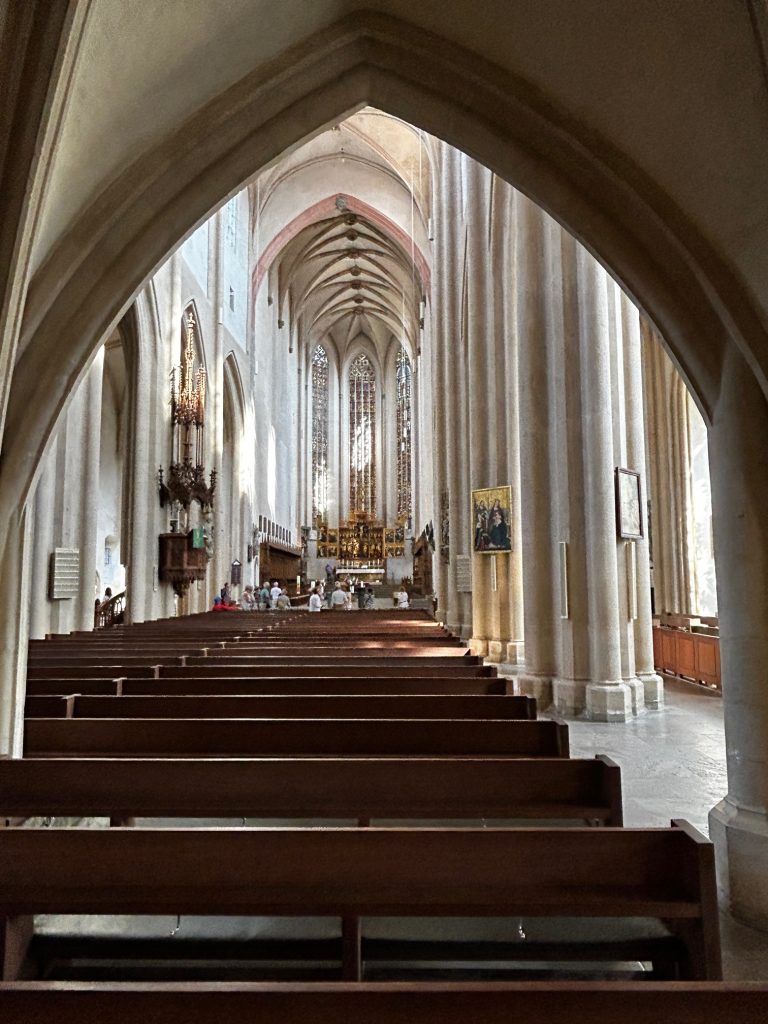

Another view towards the Hauptaltar from under one of the arches at the rear of the church. Just inside the main entrance is an unusual African wood carving of the Nativity…
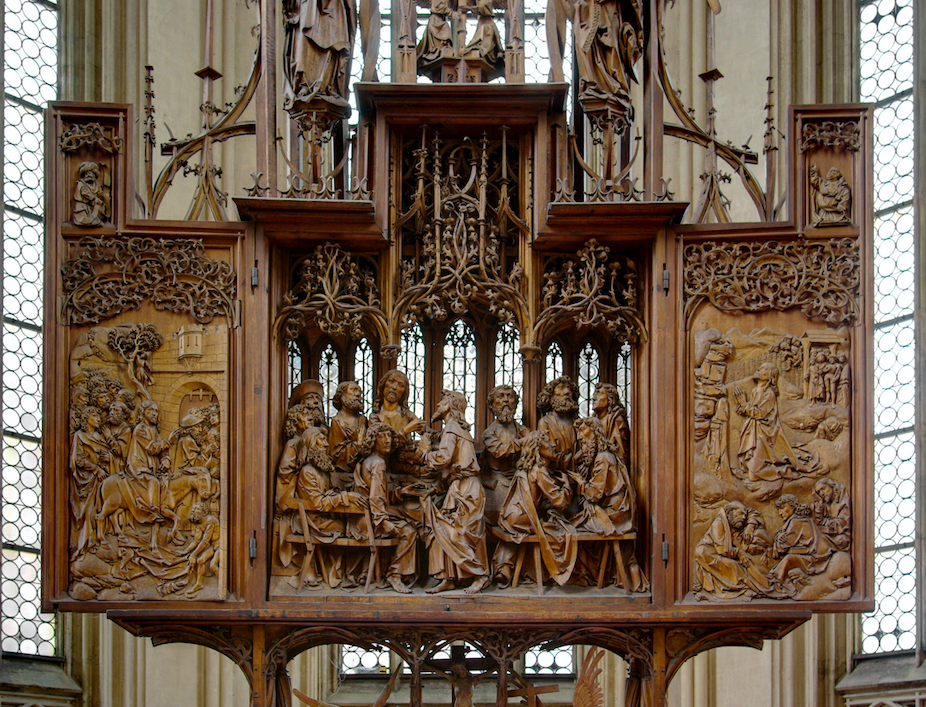
… and at the back of the church is the Holy Blood Altarpiece, a beautifully carved depiction of the Last Supper crafted by Tilman Riemenschneider in 1505. Unusually, Judas Iscariot takes centre stage in this work of art but this figure can be (and is) removed between Good Friday and Easter Monday.
I mentioned previously that Rothenburg boasts 4 kilometres of some of the best preserved medieval walls in Germany. Those stretching along the northern and eastern sides of the town are covered sentry walls and they make for a great 2.5 kilometre walk from the Klingentor, through the Galgentor (Gallows Gate) and Rotertor, all the way to the Spitalbastel.

There are still 42 towers in the town that can still be seen but not all of them are to be found along the town walls. The fact is, some of the town walls (but not the towers) were dismantled and moved as the town continued to expand through the Middle Ages. Hence there being a fair few isolated towers all across the town.
I confess to not making a note of the names of all the towers I passed through, by or along during my walkabout but; here are some photos anyway…
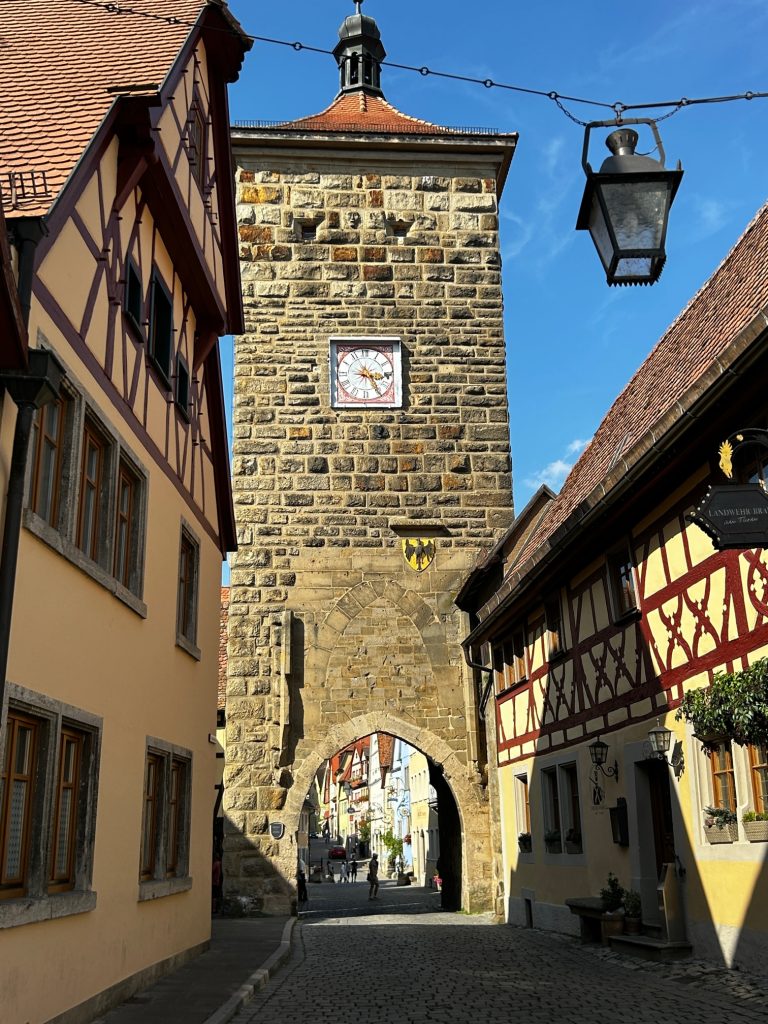
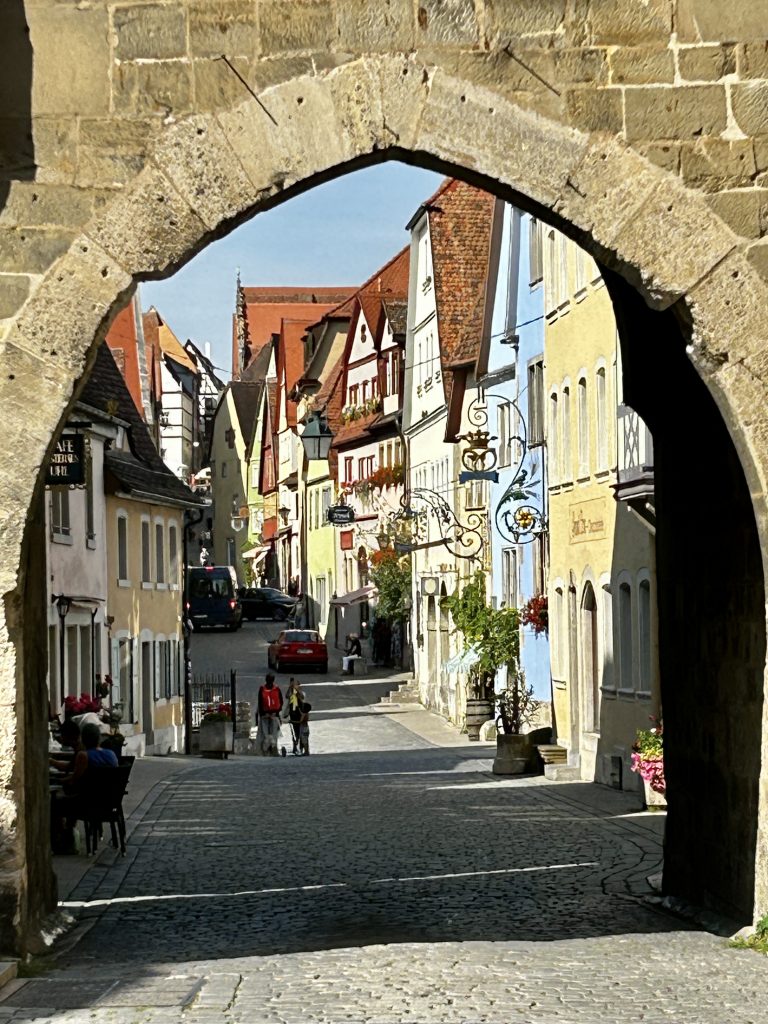
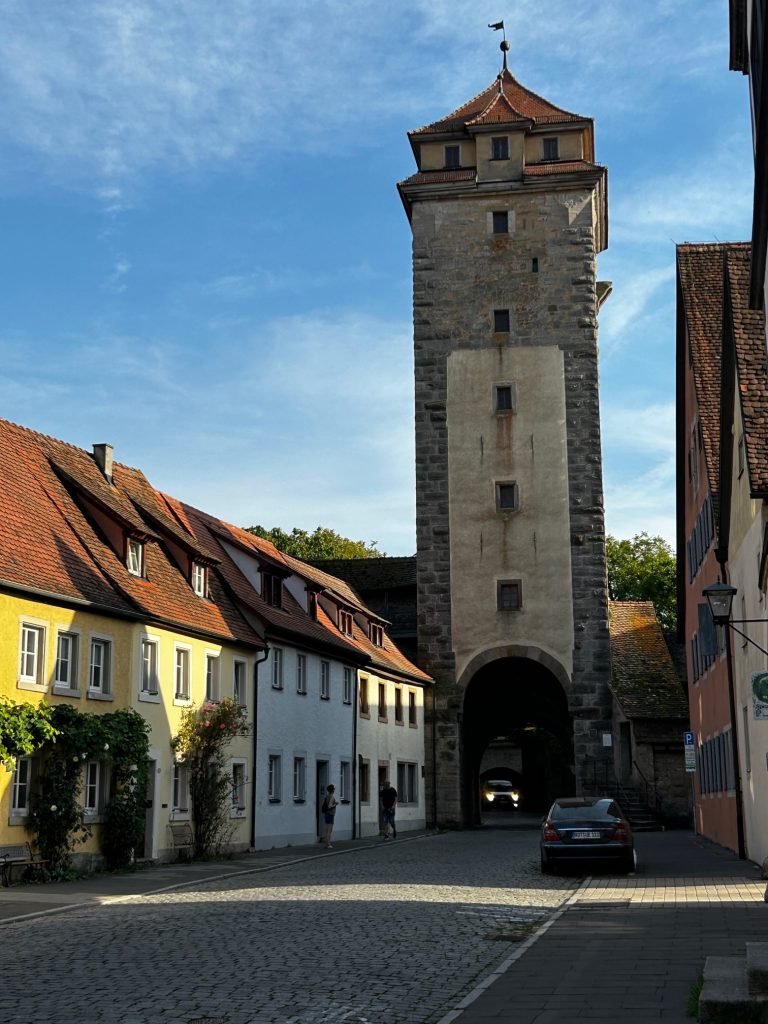


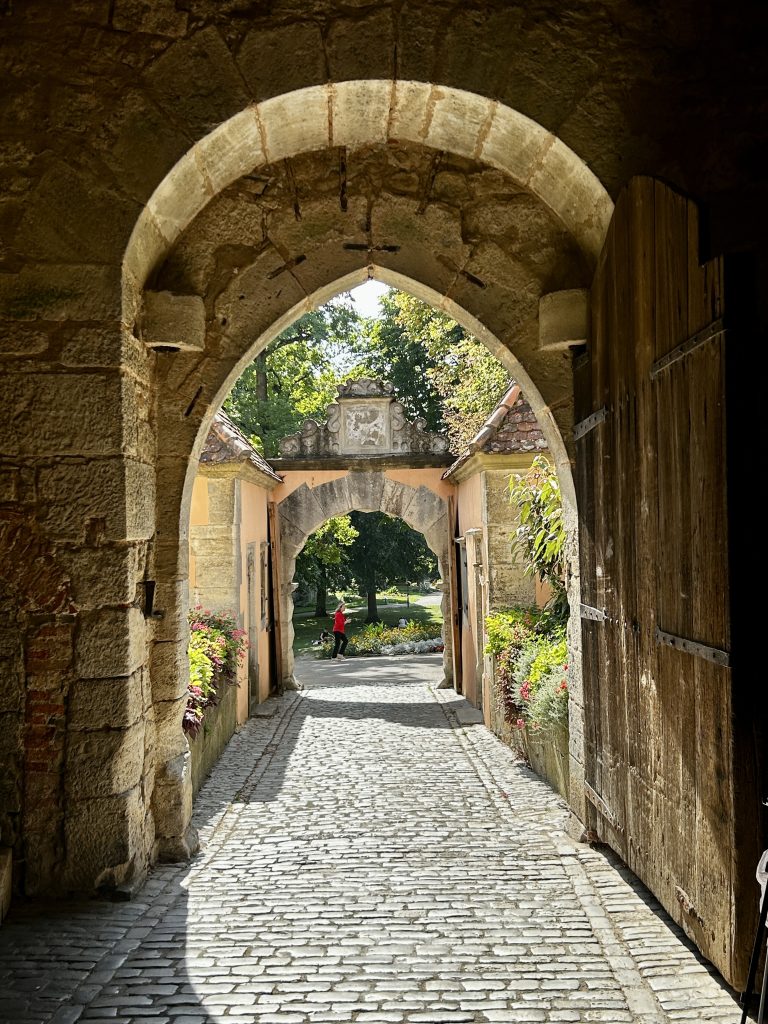
From Spitalbastel I made my way back to the Van, stopping for a beer and to telephone Vanya on the way. She wasn’t feeling any better and we decided therefore to move on the next morning. That would give the painkillers a little more time to work and, anyway, we would be returning to Rothenburg ob der Tauber some time in the not too distant future.


And next time? On the must do list is, first and foremost, an overnight stay. It is an absolute must to see and photograph the town at night (when all the day trippers have left) and to join the “Night Watchman’s Tour”. I should explain, there’s a guy called Hans Georg Baumgartner who, most nights (full details from the Tourist Office), dresses as a Medieval Night Watchman and in the best Monty Python style guides small parties around the town, all the time regaling them with facts and ribald stories of life as it used to be in Rothenburg ob der Tauber.
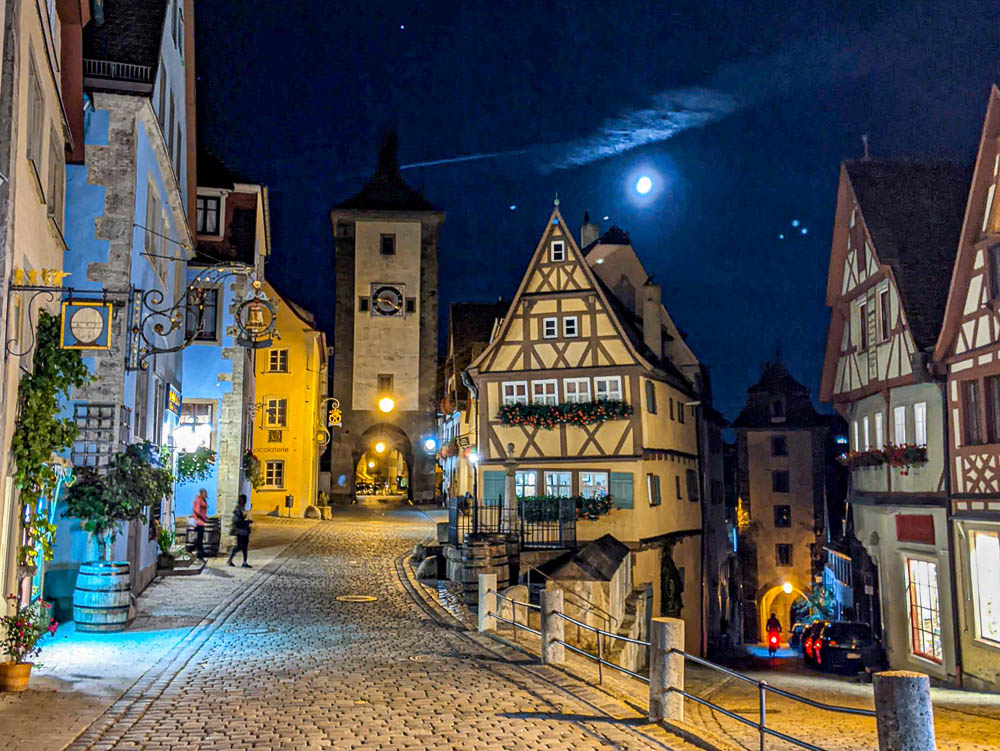
It is the above image of the Plomlein (not my photo) that demands Vanya and I stay overnight in Rothenburg
